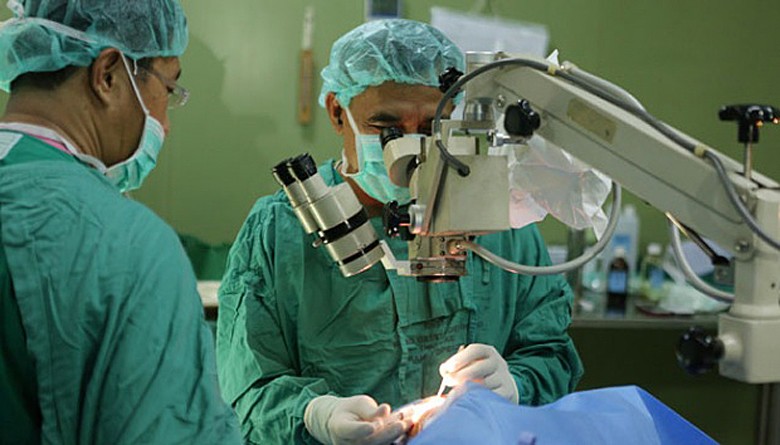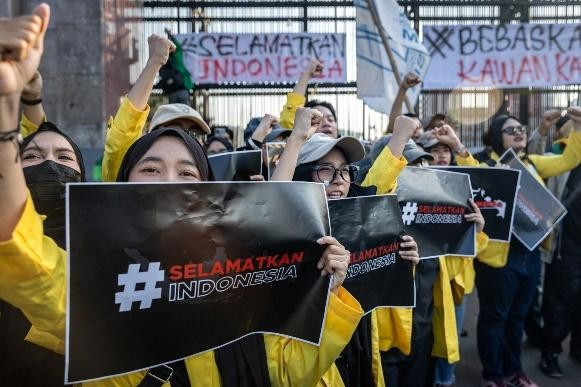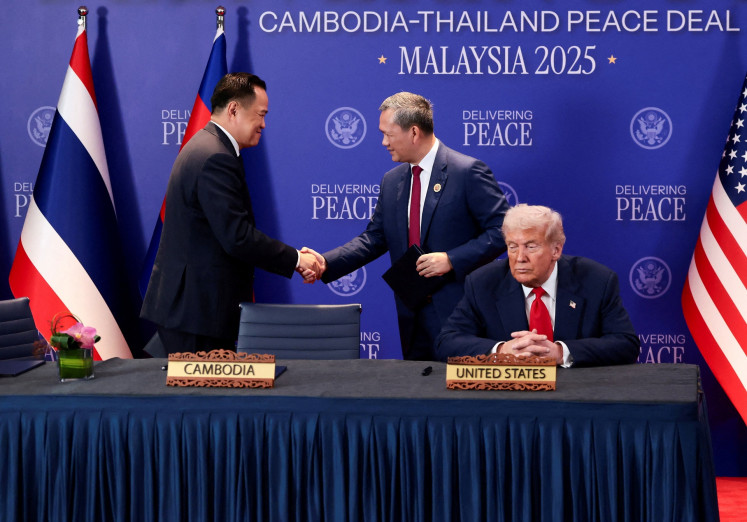Popular Reads
Top Results
Can't find what you're looking for?
View all search resultsPopular Reads
Top Results
Can't find what you're looking for?
View all search resultsVision 2030: Achieve integrated, people-centered eye care for all
How policymakers can drive rapid, equitable and sustained progress toward universal eye health coverage remains a challenge.
Change text size
Gift Premium Articles
to Anyone
E
ye conditions affect people of all ages and stages of life, and most people will experience at least one eye condition during their lifetime. However, in the absence of prompt diagnosis and treatment, even a minor impairment can significantly affect a person’s quality of life, potentially impacting educational attainment, impeding workforce participation, and increasing symptoms of depression and other mental health conditions.
Today, at least 2.2 billion people globally have a vision impairment or blindness. At least 1 billion cases of vision impairment could have been prevented or are yet to be addressed. Nearly 30 percent of the world’s blind and vision impaired live in the WHO South-East Asia Region, which comprises just over a quarter of humanity.
Across the region, demographic and epidemiological trends are expected to exacerbate this burden, due primarily to ageing populations and increased noncommunicable diseases (NCDs), especially diabetes. In 2019, the region was home to 87.6 million people with diabetes. Of them, 30.6 million had diabetic retinopathy – a disease of the retina and its blood vessels – and 9.6 million had sight-threatening retinopathy. By 2030, the prevalence of diabetic retinopathy is anticipated to increase from 11.3 percent to 12.2 percent.
Globally, the cumulative economic cost of blindness and moderate to severe vision impairment in 2020 was estimated to be US$411 billion, the majority borne by low- and lower middle-income countries.
Lessons learned over the past three decades provide hope. Between 1990 and 2020, the age-standardized prevalence of global blindness fell by 28.5 percent. In most countries of the region, trachoma – a common infectious cause of blindness – is now largely controlled.
In 2018, Nepal became the first country of the region to be certified for having eliminated trachoma as a public health problem, followed by Myanmar in 2020. The region is committed to end trachoma as a public health problem by 2025.
To not just sustain but accelerate progress, WHO’s new Regional Action Plan on integrated people-centered eye care – launched in September 2022 – aims to facilitate access for all to quality, effective, safe, affordable, timely and equitable eye care services, leaving no one behind.
For this, the action plan aims to enable all countries to attain a 40 percent increase in effective coverage of refractive errors and a 30 percent increase in effective coverage of cataract surgery. It aims to ensure that at least 80 percent of people with diabetes are screened regularly for retinopathy and that 80 percent of those identified with sight-threatening retinopathy are treated. Additionally, the plan has a goal of eliminating trachoma as a public health problem by 2025.
Universal eye care is not just aspirational; it is achievable by fully implementing the plan, with a focus on several key actions.
First, ensuring access to essential eye care interventions close to where people live, within primary health care services, with meaningful engagement of communities.
Second, investing in human resources for health to expand service capacity and coverage of essential eye care interventions.
Third, harnessing technologies and innovations such as telemedicine, mobile health, artificial intelligence, and distance learning to rapidly expand service coverage, including follow-up and referral.
Fourth, leveraging partnerships across programs areas – such as for NCDs, neglected tropical diseases, childcare, elderly care, education, disability and rehabilitation – to provide eye health and care services.
And fifth, monitoring progress and using data and evidence to inform policies and programs, service delivery and implementation, ensuring access for all to quality preventive, promotive and curative eye care services, free at the point of delivery, prioritizing those furthest behind.
In the region’s onward quest to achieve integrated people-centered eye care for all, WHO will continue to provide member states its full technical and operational support. Together, we must achieve rapid, equitable and sustained progress towards universal eye health coverage, for everyone, everywhere in our region.
***
The writer is World Health Organization’s South-East Asia regional director.











